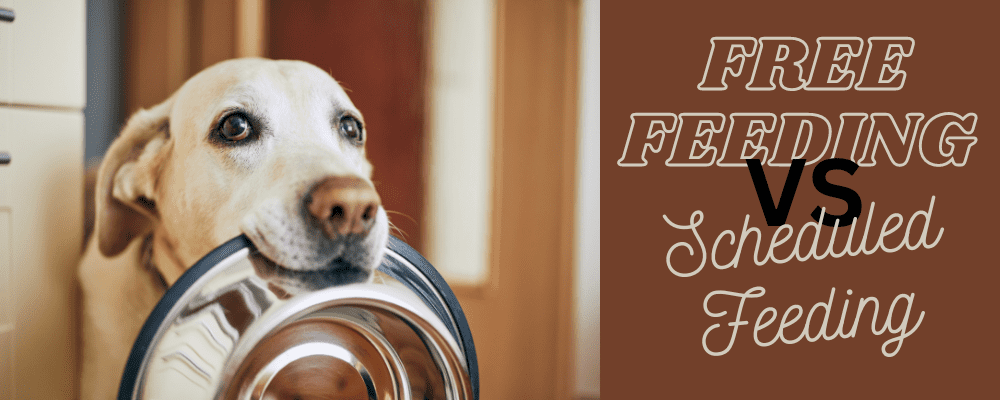When it comes to feeding a dog, the food options are varied but what is the best way to feed a dog?
Meals in a crate or loose in the kitchen? Free feed, or meals served only at a certain time? What about food dispensers? It turns out that there’s a lot to think about when it comes to feeding your four-legged friend.
Here’s a quick rundown on feeding options for your dog. Of course, there are pros and cons to each method (as well as variations to each). Check them out and decide which way of feeding is right for you and your pup.
Free-feeding
Free feeding is a feeding practice in which you leave a bowl of food out for your dog at all times. Your dog has constant access to this food bowl and can eat whatever he wants whenever he feels like it.
Pros
- Convenient – especially if you have a busy schedule
- This method allows the dog to eat on its own terms.
- You can use food dispensing toys
- You can leave the food in the crate if your dog is crated for the day
Cons
- You will need to watch your dog’s body condition carefully and pay attention to how much he eats each week.
- Can lead to obesity
- This method works best in a one-dog household where there is no competition for food.
- Works best on a dry dog food diet
- Many dogs pick up the habit of taking food from their bowls and eating it somewhere else, which can be kind of messy.
Scheduled feeding
Scheduled feeding is when you give your dog meals at set times every day (ideally, twice a day for adult dogs and three times a day for puppies). It also limits the time the food is down (15 minutes to an hour) If the dog does not finish the meal, it is given to him at a later meal. A food dispenser on a timer may be used.
Pros
- This method is much easier to know how much you are feeding your dog.
- It’s the most suitable way to feed wet or fresh foods that might go bad if left out for too long.
- Meals can be used as a reward or bonding experience.
- It gets your dog into a routine, which can help calm anxious pooches.
- This method helps with housetraining a dog since you know when the dog ate and when to take it out to eliminate.
Cons
- You need to be around at the time to feed your dog.
- You may accidentally be feeding your dog too much or too little.
- Your dog might feel pressured to eat, even if he’s not hungry.
How Important is it to ration the food?
For decades, scientists have studied how dietary restriction, without malnutrition, can increase life span and delay the onset of multiple age-related diseases in some mammals. Purina research showed that maintaining optimal body condition from puppyhood and throughout life can improve both life span and health parameters in dogs.
In a 14-year study, Purina scientists were the first to prove the importance of keeping dogs in lean body condition from puppyhood and throughout their lives. The Purina Life Span Study tracked 48 Labrador Retrievers for 14 years. Half ate all they wanted and became overweight. The other half were kept lean. The lean dogs lived on average 2 years longer and had a much better quality of life overall.
